Generating Revenue in 9 Months With International SEO
By entering your email address, you agree to receive emails from Brafton in accordance with our Privacy Policy.
You may unsubscribe from these communications at any time.
In Q4 of 2019 we decided to compete in Australia’s content marketing space.
That would mean targeting the Australian market with an entirely new domain, or drastically modifying our existing website so that we could be found in Australian searches.
We estimated the market size, extrapolated the potential search market size and conversion potential. We liked what we saw and decided to hit the “go” button. We were officially going international with our brand.
Here’s what we’ve seen since launching:
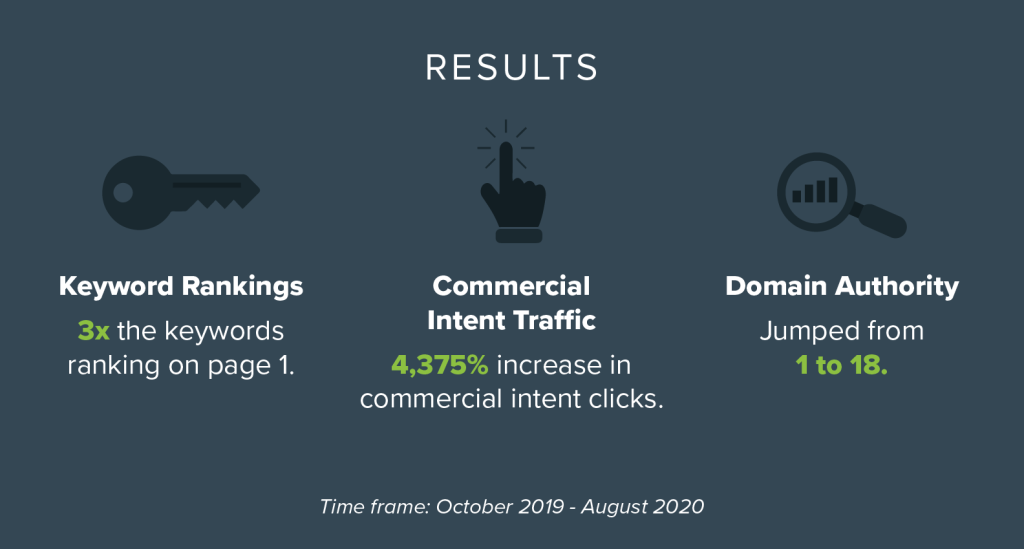
Keyword Rankings
From October through December, our site performance was practically nonexistent. We ranked for just a few keywords and drove correspondingly few leads.
By January, we started picking up the pace, ranking for 122 keywords on page one, and 31 in positions 1-3 (the money-making spots).
But by August, we had tripled both numbers, raising our total page 1 keywords to 381, and position 1-3 keywords to 93.
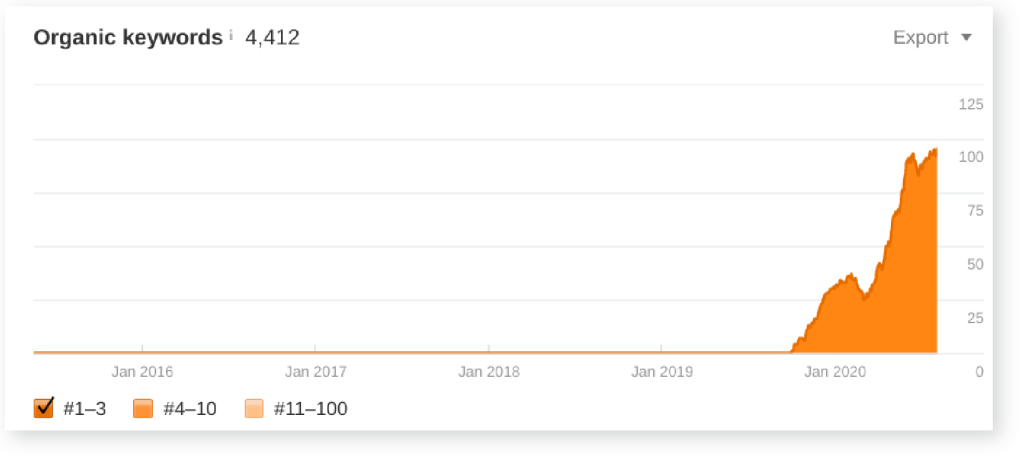
By way of comparison, our top two digital competitors, Brandalism and King Content, rank for 89 page 1 keywords combined (43 and 46 respectively).
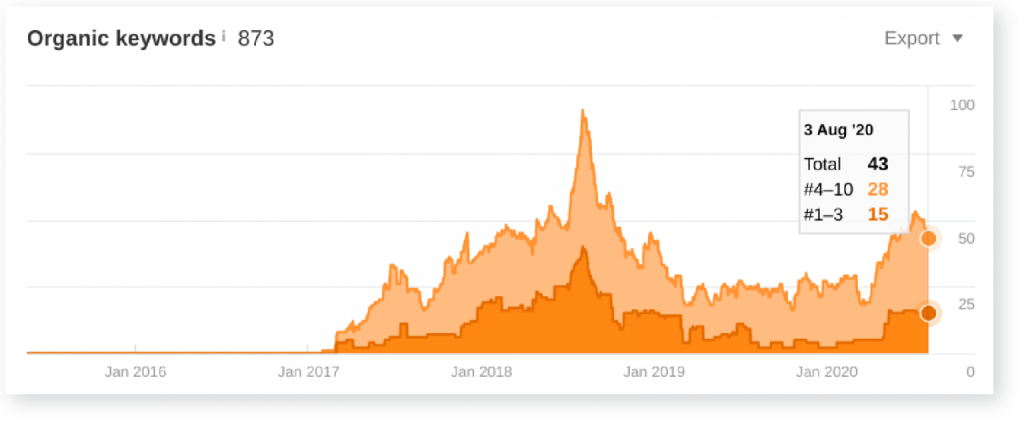
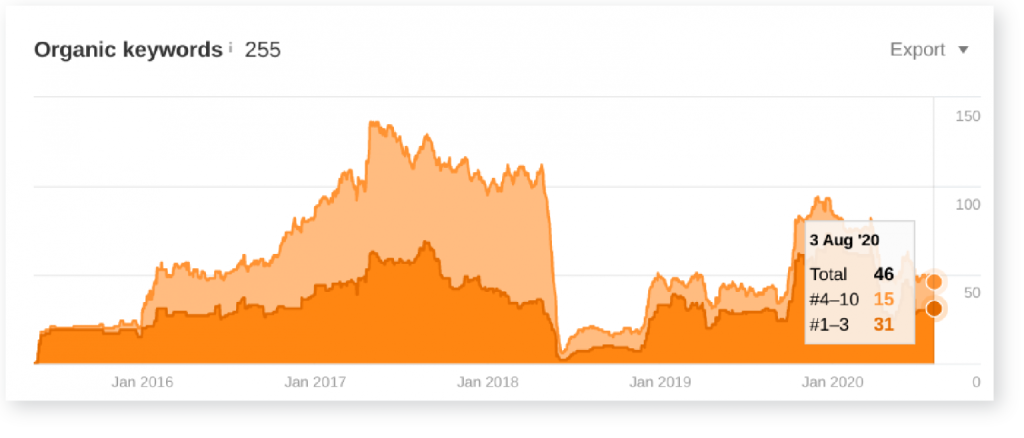
Quadrupling our top two competitors’ performance has been an encouraging start, especially considering we are less than a year into the venture.
Commercial-Intent Clicks
Keyword rankings are great, but only at a surface level.
What’s missing is context: “Do the keywords we rank for drive commercially relevant traffic?”
To ensure that we drive traffic with intent to buy something, we have 60 product and service landing pages that target keywords used by searchers who will likely convert (fill out a contact form). These pages target keywords such as “Content marketing services,” “Organic SEO services” and “Copywriting services.”
We know that for every 4.5 clicks from these keywords, we will get one conversion from someone looking to book a meeting with a consultant. This is essentially how we make money.
So, we need as many of these commercially relevant clicks as possible.
Here’s what we’ve seen since January:
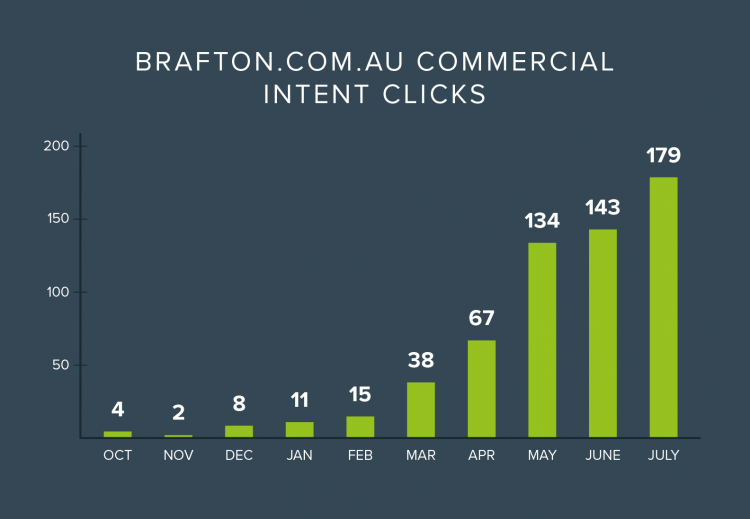
You can clearly see that this website provided almost zero commercial value for the first several months. Then in March, our traffic exploded, sending more leads to our reps than we could keep up with.
We had to create a new qualification criteria to handle the load.
Domain Authority
The most recognized measure of website “strength” is a metric by Moz called Domain Authority.
Domain Authority exists to give webmasters a sense of website strength relative to their competitors. This is calculated with more than 40 unique signals, resulting in a single score between 1-99. In short, it’s a test that describes a website’s trajectory and authority in its space relative to its competitors.
In January our Domain Authority was 2, very normal for a brand new website. By August our Domain Authority was 18. We are at roughly half of our top competitors’ Domain Authorities in less than a year.

How Did We Do It?
As this was the first time we had attempted an international SEO strategy, It was a learning process.
After countless hours of research, we were able to navigate through dozens of unknowns, and mostly, learn to be patient and trust the process. After having done this process twice now (we also expanded into the UK), we were able to put together an efficient process for duplicating our success. It looks like this…
When you decide to target international markets with your website, the first thing you need to determine is how you want to set up your URL structure.
This decision is crucial, serving as the permanent foundation for your success or failure.
You can choose from a new top level domain (TDL), subdomain, subfolder or language parameters, each with their own unique pros and cons.
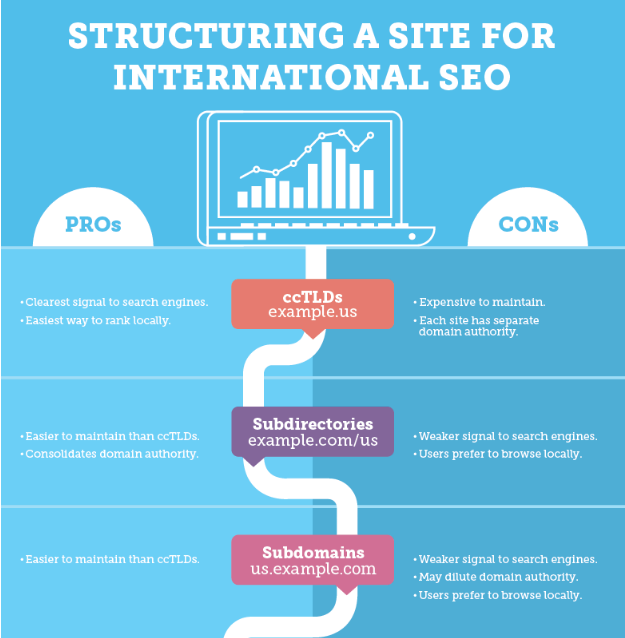
We opted to register a brand-new TLD, www.brafton.com.au. This means the new site would be treated by Google as such: a completely unknown quantity that would reap none of the benefits of our U.S. site. By actively choosing to not ride the coattails of our successful U.S. site, we would be effectively starting from scratch, albeit with a higher long-term ceiling.
Start Driving Commercial Traffic Today.
By creating an international brand, you’re effectively duplicating your original site into either a new language, geography or both. (Unless you decide to write brand-new content for the new site, which you certainly wouldn’t want to to do.)
You need a tool that will take your original site and duplicate every piece of content into your new version. This tool will copy every URL exactly as it is on your old site and convert it into your new site and URL structure.
For example:
We opted to use the WordPress Multilingual Plugin. If you work in WordPress, this tool is a no-brainer as it eliminates a lot of potentially costly mistakes you will be likely to make by doing the process manually.
With one flip of a switch, we duplicated over 8,500 pages. Scary.
Everything up to this point is pretty straightforward. All you’ve done is chosen a URL structure and duplicated your site, page for page and word for word.
What’s not straightforward is how to tell Google what you did!
By duplicating your site, you’ve effectively created an SEO problem that needs to be dealt with. Google will now see that there are two exact copies of every page on both of your sites, and you’ve given Google no instruction on how to deal with the problem.
Fortunately, through hours and hours of research through articles and forums, we were able to figure out exactly how to tell Google what’s going on.
If you’re considering going down this path, read this next part. Trust us.
We need to tell Google the following things.
- The content IS duplicated, but it was intentional.
- We want AU pages to show up in AU searches, and U.S. pages to show up in U.S. searches.
- A clear map of where each version of the content lives.
Here’s how we did it.
Hreflang tells Google where each version of the duplicated content lives, which regions we want the content to show up in search results and the language that should be displayed.
For example, if we were to duplicate our site into Australia, we would use the following markup for the homepage on both the U.S. and Australian sites:
To reiterate, you will put this same line of code into both duplicated pages (on the AU and U.S. sites). This tells Google “Here are the two versions of the duplicate content, this is where they live and these are the languages that should be displayed in their respective regions.”
Here’s what the actual code looks like on each page:

Neglecting to implement proper hreflang markup will likely result in Google misunderstanding where you want your duplicate content to show up in search.
Start Driving Commercial Traffic Today.
Canonical Markup
Canonical tags tell Google which version of duplicate pages should be treated as the original, and deliver SEO value to that page.
In other words, you can either have Google ignore one version of a page and only have the other show up in search, or have Google treat each page individually and let them both show up in search.
We found that most problems occur in this step when people make the mistake of sending all credit to the original version of the page, giving the new page no SEO value.
Since we want each duplicate page to generate its own SEO value in each location, we want to tell Google that each page is its own entity.
We do this with canonical markup. On each page we will “self-canonicalize,” which means we are telling Google that each version of the duplicated pages should get their own SEO value. For instance:
On the duplicated Australian homepage: https://aus-main-www.dev.websites.brafton.com we would use the following markup:
On the original homepage: https://main-www.dev.websites.brafton.com we would use the following markup:
This is called “self canonicalization,” meaning send all SEO value to this page.
So here is what the final markup would look like for each of the U.S. and AU homepages, including the hreflang markup:
U.S. Homepage:
AU Homepage:
So this may have seemed complicated, but in reality it’s just two things you need to do: set up a global setting for hreflang markup and canonicals on all pages. Once you implement these settings at a global level, you’re done. The rest will take care of itself.
At this point, your site is ready to be indexed in Google search, and you’ll want to do everything in your power to make sure that happens as quickly and accurately as possible.
Create a new instance of Google Search Console for your duplicated site. This process involves simply adding a short snippet of code to the site to verify the account, then you’re up and running.
For Google to understand the structure of your site, you’ll now need to create an XML sitemap and upload the file to Search Console. If you use Yoast, this will be created for you automatically. Grab the URL and submit it to Search Console:
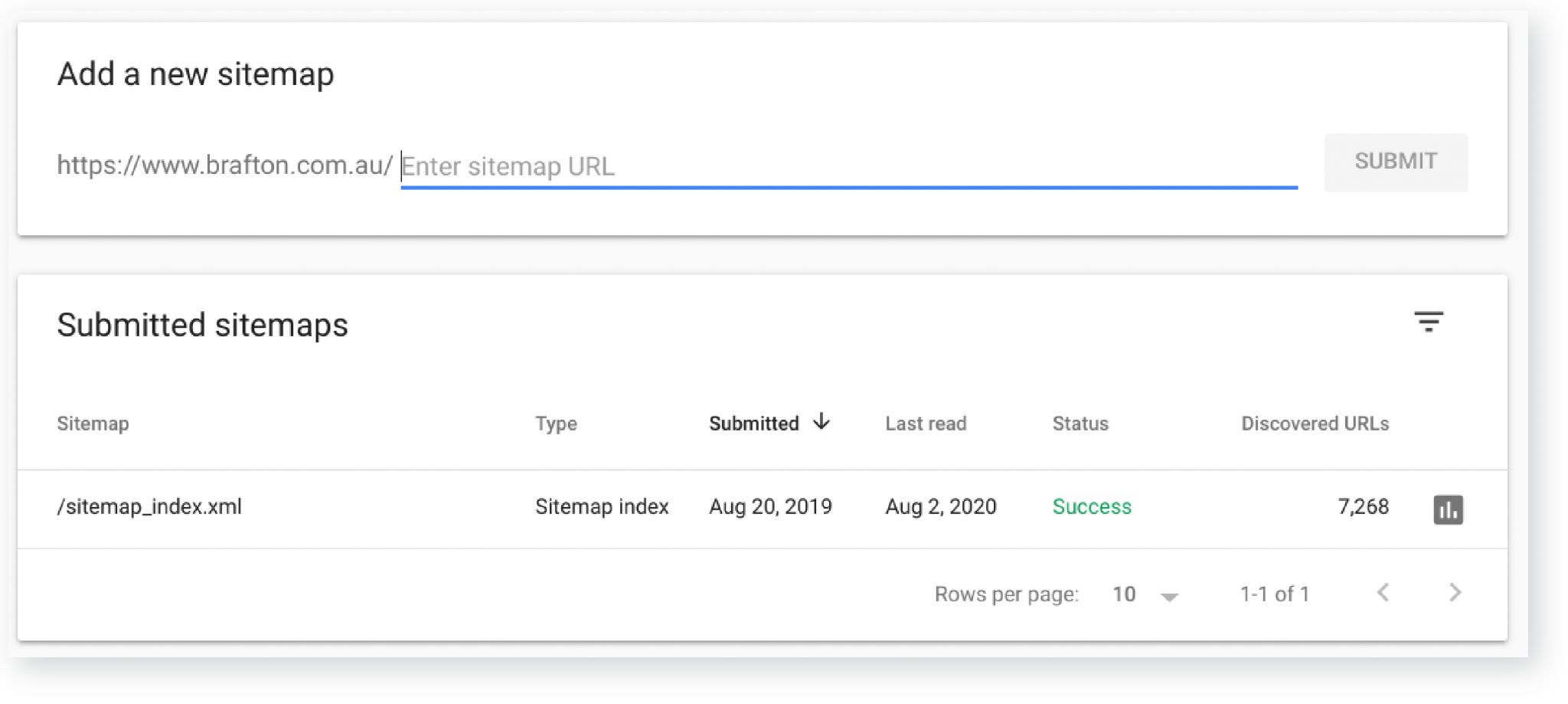
Ensure that the status reads “success.” This file tells Google where all of your pages live and how to navigate your site for indexing.
The name of the game is getting Google to find the pages on your new site and index them properly. Keep an eye on the “coverage” section of GSC and monitor the number of pages Google has indexed. You will want this to match the number of pages that are indexed on the original site.
If you’re having trouble getting important pages to index, you can inspect individual pages and request to have them indexed individually.
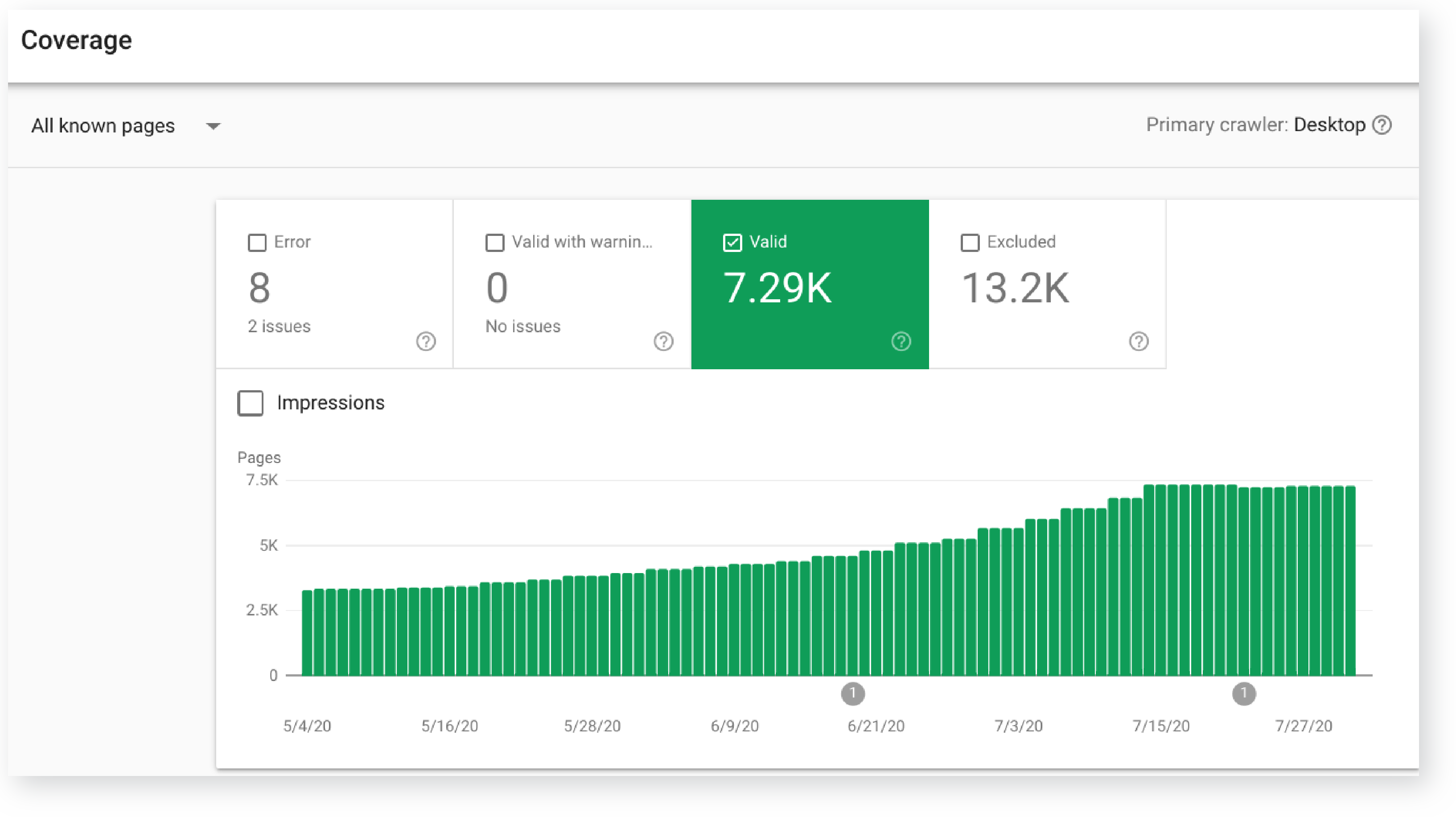
Keep vigilant and don’t expect that Google is going to do what you want, when you want it.
We made the mistake of assuming search volume for target keywords would be somewhat similar across regions.
Absolutely wrong.
For example, the keyword “website design services” is a great keyword for our U.S. market, generating 1,400 searches per month. But our AU market shows a major discrepancy:
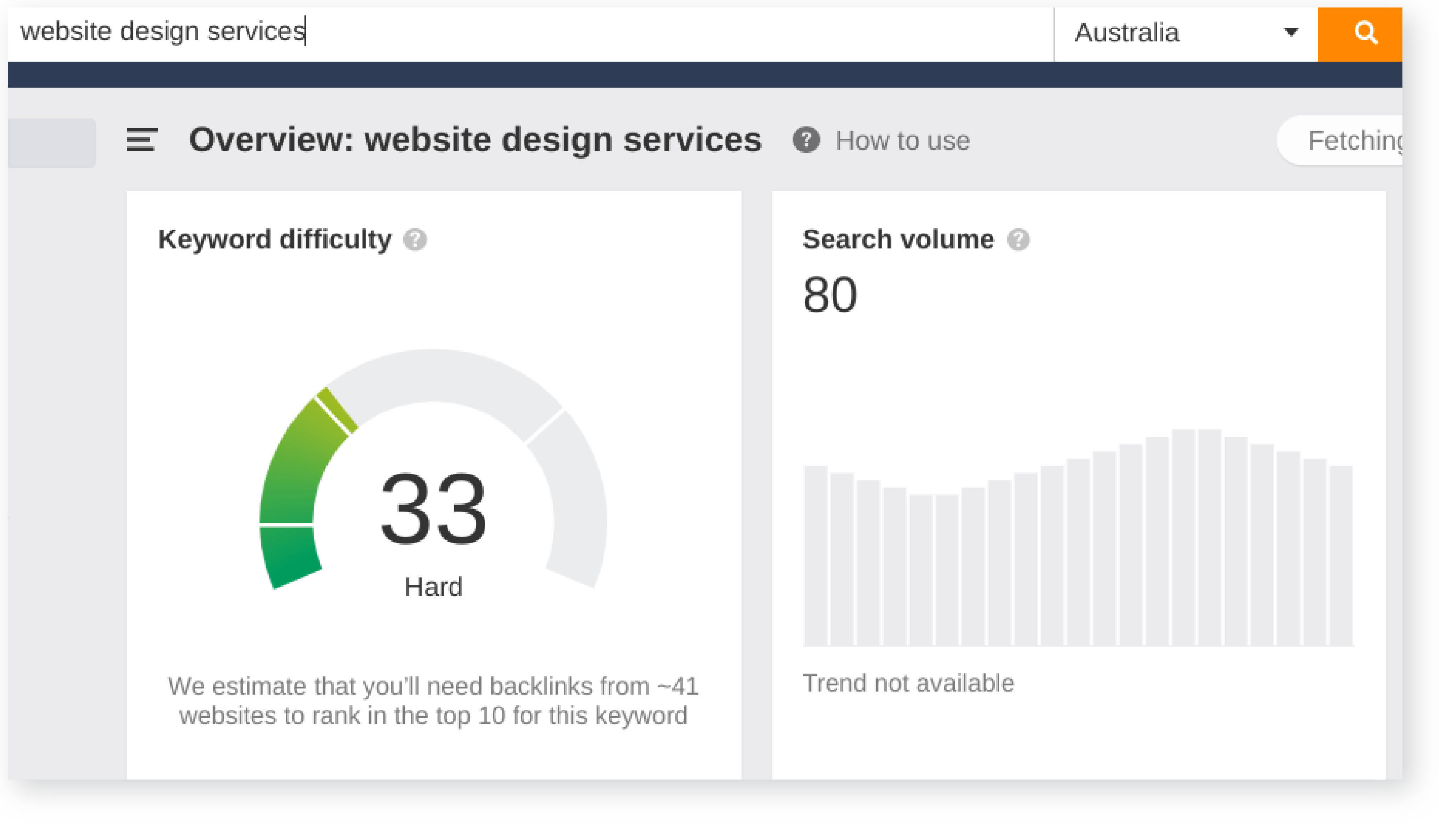
After doing a little keyword research, we found that “web design company sydney” has far more potential, albeit a bit more difficult to rank for.
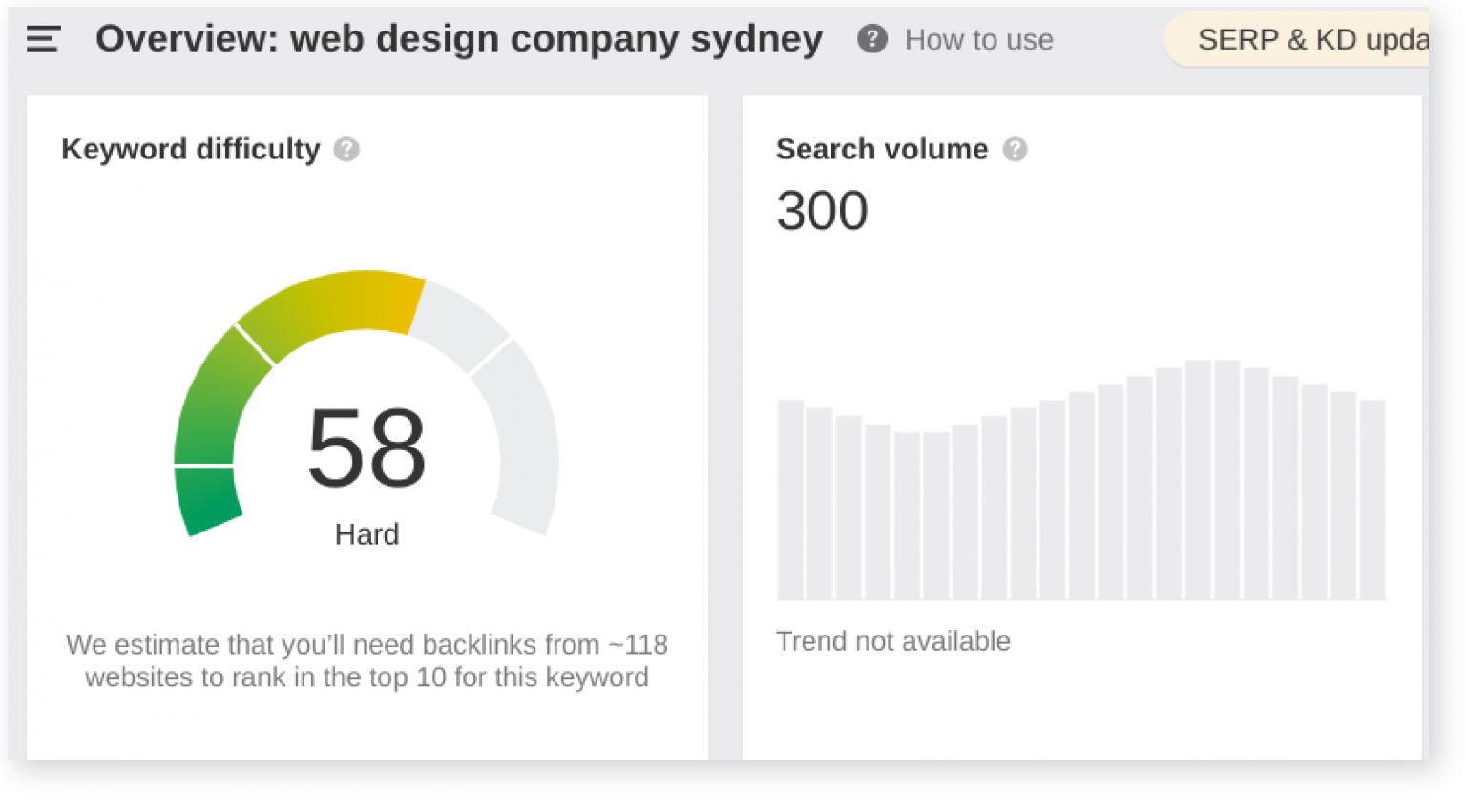
We found instances like this across 17 of our 60 product/service landing pages. Our findings made it clear that Australian and U.S. search behaviors are very unique and need to be treated accordingly.
The result of this exercise was an increase of over 100% in total search potential for our commercial-intent keywords. The intent of the queries was exactly the same, the language they used to search for those services was very different.
Conclusion
We now have a fully sustainable business, driving leads strictly through organic search and email marketing nurture.
This endeavor was a big success for a couple reasons: We implemented the SEO techniques successfully, and we used the same high-performance content writing techniques as on the U.S. site.
Much of our SEO success comes from our Search Performance Brief product, which is a technique for writing the most comprehensive content possible.
In the U.S., we started applying Search Performance Briefs in January of 2018, resulting in a:
5x increase in page 1 keyword rankings.
Because we duplicated over this content that performed so well in the U.S. market, it performed well in the AU market as well.
And it’s going to perform even better as we modify the content to compete in the new region.
But that certainly won’t be the end of the story. SEO is a constantly evolving process where you need to monitor your positions and click-through rates proactively.
Competitors move in, taking your market share.
Behavioral click-stream data can move your ranking positions up and down.
Google’s algorithm changes constantly.
The game never ends. But as indicated by quadrupling the keyword ownership of our two closest competitors combined, and generating enough inbound meetings to fill quotas, we think we are on the right track.
